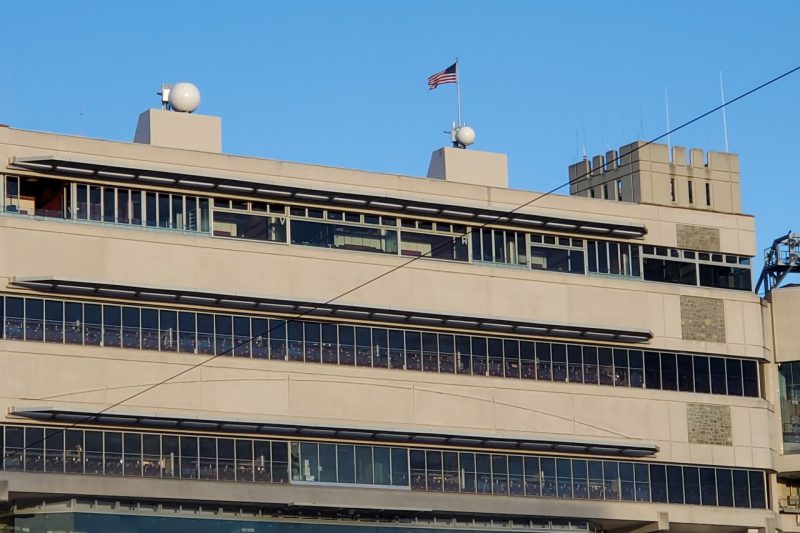
When you come to Lane Stadium for commencement, Hokie football, or another activity, you might have experienced that cell service can vary dramatically depending on where you are in the stadium. The next time you are there, look for the distinctive new antennas above the west side press box that have been added to improve cellular performance.
Demands for cellular bandwidth are ever-increasing, and Lane Stadium itself presents a challenge for cellular service providers. Its monolithic concrete and steel construction impacts the signal and makes it challenging to mount antennas. This effect has been especially noticeable in the lower East stands. Mounted on the west side, the new spherical MatSing Lens antennas direct the signals across the field to the East stands, delivering greater capacity to fans, greatly improving signal quality throughout the stadium, and making it possible to enhance service at other campus locations.
During the past two years, the Virginia Tech Foundation has worked with the university and wireless carriers to expand the capabilities of the cellular network. Through its subsidiary, Virginia Tech Technology Assets, the foundation worked with specialists from Mobile Communications America, and cellular carriers Verizon and AT&T to install the new lens antennas on Lane Stadium. The foundation also worked with AT&T to make other improvements to its equipment on the main distributed antenna system (DAS) structure, located behind Lane Stadium.
MatSing Lens antennas use a proprietary dielectric polymer that mirrors the human eye’s capacity to refract light and apply it to radio frequency transmissions. The antennas are typically installed in elevated locations where signal can be targeted to serve specific needs within the venue. The antennas can be customized to fit the needs of cellular carriers, making it possible to optimize the venue for their customers.
In addition to improving the user experience, this new technology will position the system for 5G services in the future.
The current round of improvements is nearly complete. AT&T began using the new antennas at the end of the 2022 football season, and in the coming months, Verizon will start using them.
Submitted by Virginia Tech

